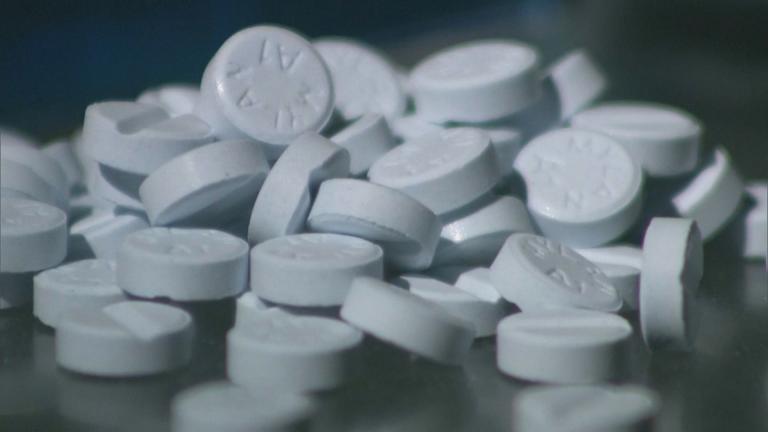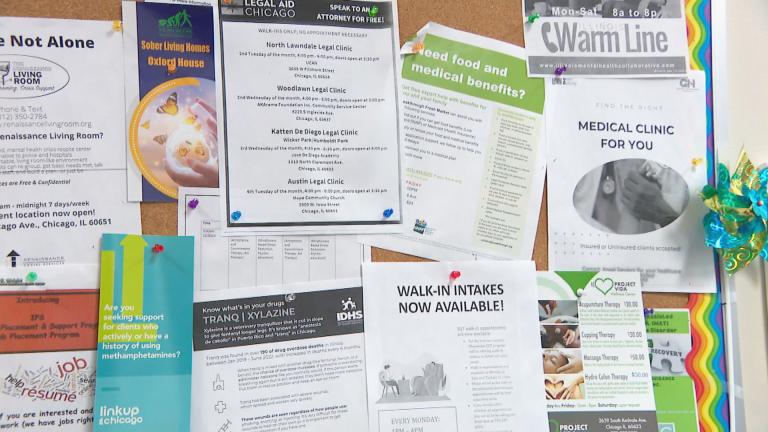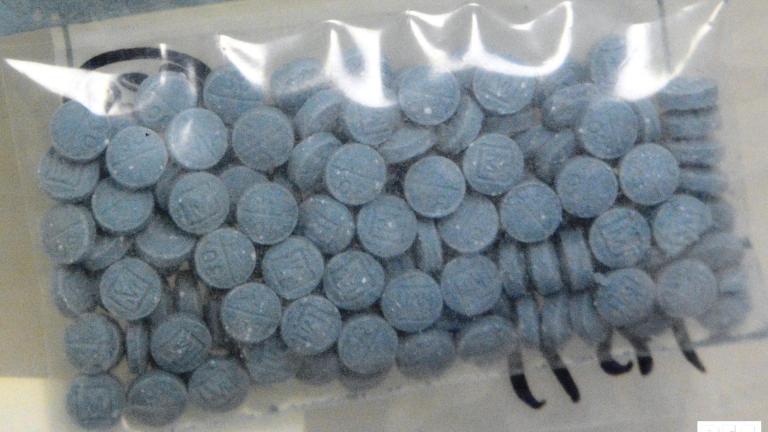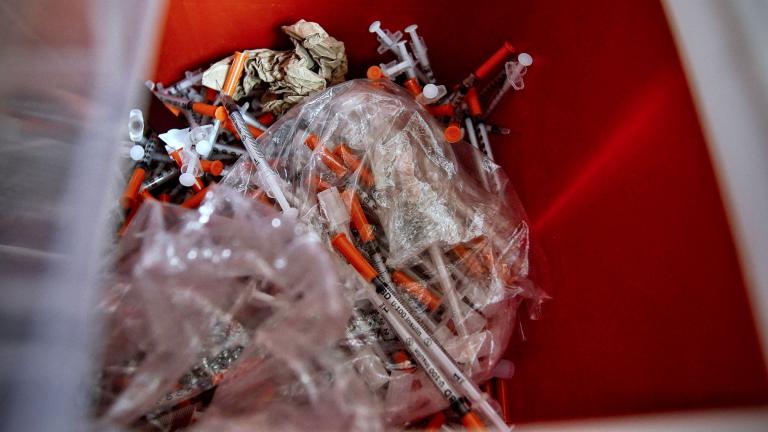Chicago’s opioid epidemic has risen to a deadly new peak.
The Cook County Medical Examiner’s Office just reported that a record 2,000 Cook County residents died of opioid-related overdoses last year.
That number has consistently gone up every year. WTTW News sought to find out what’s behind the troubling trend and found the drugs are more diverse, more available and more lethal than ever.
Des Plaines native Tomasz Kolodziejczyk said he used fentanyl to deal with grief.
“Fentanyl blankets your emotions,” Kolodziejczyk said. “It comforts them. It just masks them.”
But the relative benefits he received quickly turned into an all-encompassing addiction that he said caused him to lose his job and relationships with friends and family members.
“It kinda robs you of everything — physically, mentally, spiritually,” Kolodziejczyk said.
He is now weeks into his second stint at rehab, in therapy and living at the Haymarket Center — the country’s largest substance abuse and mental health treatment facility.
WTTW News met with Kolodziejczyk and two other residents who are recovering from opioid addiction to better understand what’s driving the record number of overdoses in Cook County and across the country.
Chicago resident Alicia Jackson said she has been addicted to heroin for 25 years, and homeless much of that time.
“I was panhandling, selling drugs, prostituting,” Jackson said. “You do whatever you have to. When the drug said come, you go.”
James Stewart, a former high school basketball star at Westinghouse College Prep, said he was addicted for 35 years and came to Haymarket by way of Cook County Jail.
“I asked God for help, and this is the help that was delivered to me,” Stewart said.
All three said they know it’s either treatment or almost certain death. At Haymarket, Kolodziejczyk, Jackson and Stewart are being treated on multiple fronts.
“We treat the substance-use disorder, we treat the mental illness and the primary care condition,” Haymarket CEO Dan Lustig said. “If you don’t treat those three simultaneously, it will cause a relapse.”
The center, located in the middle of the thriving West Loop neighborhood, treats 12,000 patients per year, mostly a low-income and homeless population.
Lustig said the nature of addiction hasn’t changed — but the drugs have.
“What we’re seeing is the heroin is adulterated with fentanyl, and that’s not something we’ve seen in our 47-year history,” Lustig said.
Fentanyl is a powerful synthetic opioid often used for cancer patients. It has gradually taken over the drug market.
There were 103 overdose deaths attributable to fentanyl in Cook County in 2015. That number shot up to 1,533 in 2020 and a record 1,825 in 2022, according to statistics from the Cook County Medical Examiner’s Office. That accounts for more than 90% of all opioid-related deaths in the county.
“Both locally and nationally, we’re seeing the complete turnover of opioids, as well as other drugs, from organic to synthetic,” said Nick Roti, executive director of the Chicago High Intensity Drug Trafficking Area, or HITDA, a federal task force that assists law enforcement in fighting drug trafficking. Roti said that drug cartels have stopped growing drugs and started making them in labs before distributing to gang members and dealers on the streets.
“It’s cheaper for them, more efficient, and their profit margins are tenfold,” Roti said.
He said the synthetics are now found in more than 99% of all illicit opioids that law enforcement recovers on the street. And it’s not just fentanyl. There are variations of fentanyl that are 100 times more potent, Roti said, and an animal tranquilizer called Xylazine has recently emerged as one of the deadliest and most popular drugs on the market. The synthetics used to be cut into heroin, but now they are everywhere.
“It’s unlikely you’re going to buy a real Xanax pill, or a real oxycodone,” Roti said. “Most of what you buy is going to be fentanyl.”
“It’s weed, ecstasy, crack cocaine, meth,” Kolodziejczyk said. “I don’t think there are any drugs not laced with fentanyl anymore.”
That makes treatment more difficult for medical professionals like Dr. Steven Aks, who is head of toxicology at Cook County Health.
“It’s harder to predict how much is the opioid and how much is the other things,” Aks said. “The more of the other stuff, the less effective our naloxone gets.”
According to law enforcement, the majority of the city’s illicit drug trade happens on the West Side.
On a recent weekday, WTTW News ran into the West Side Opioid Prevention Task Force handing out naloxone or Narcan, which can reverse an opioid overdose.
“We know isolation breeds addiction,” said volunteer worker Keith Davis, who said he himself is a recovered addict. “What we try to do is educate people on how to use the Narcan, preach to them the importance of not using alone, always having someone with them in the event they go out so that someone can possibly save their life.”
Lustig said he believes national drug policy will have to change before there’s any hope of curtailing the opioid epidemic.
“There’s more doors to prison then there are to treatment centers in this country,” Lustig said. “As long as you criminalize a medical disorder, you’ll continue to have the overdoses at the magnitude we see, and it’ll only get worse.”
Jackson said she was in and out of prison before being diverted to treatment, and said she’s been clean for a year.
“I’m just now finding out who I am as a person,” Jackson said. “I’m learning how to love myself by being here, by being surrounded by people who care.”
Follow Paris Schutz on Twitter: @paschutz








